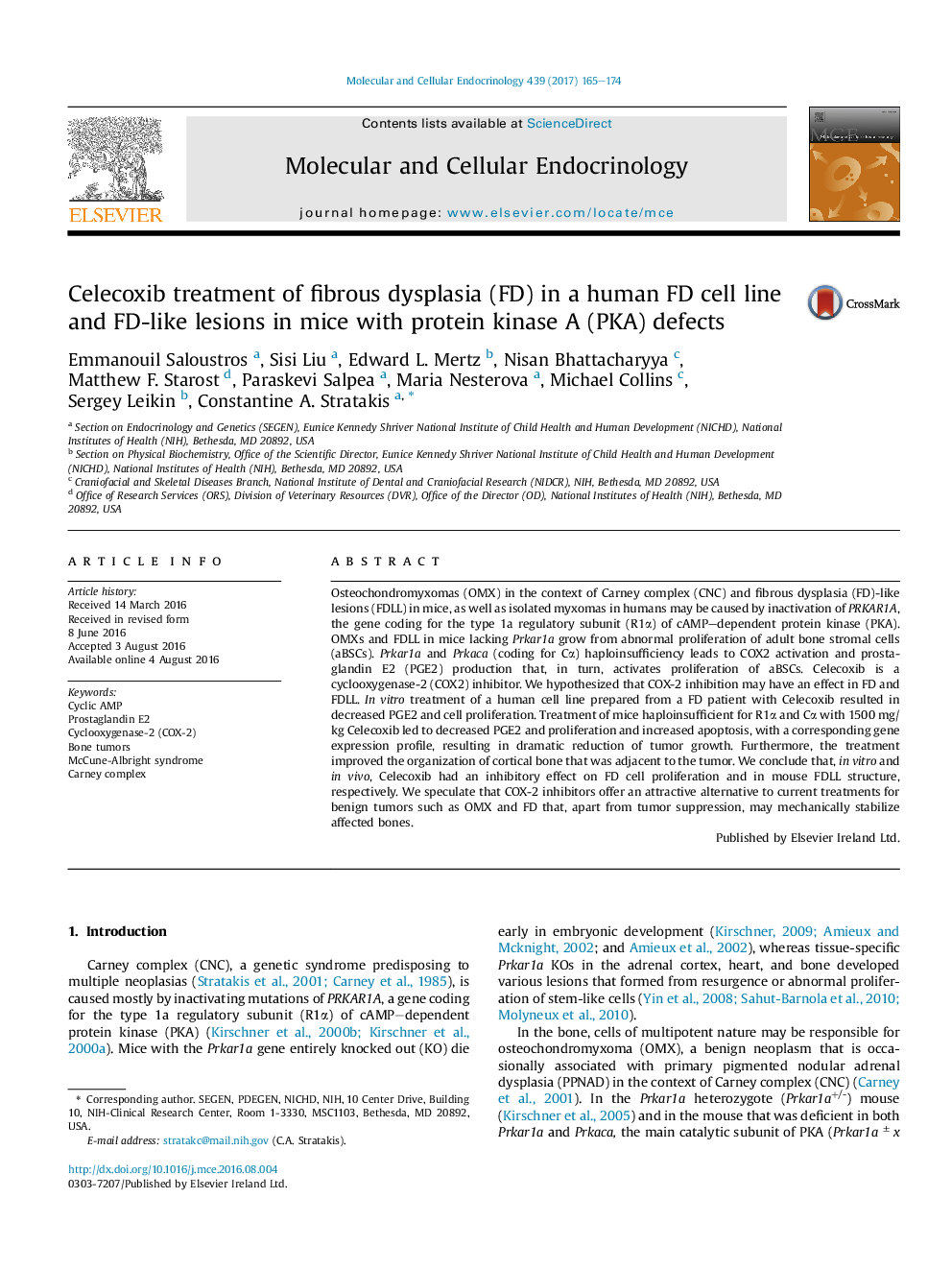| Article ID | Journal | Published Year | Pages | File Type |
|---|---|---|---|---|
| 5534308 | Molecular and Cellular Endocrinology | 2017 | 10 Pages |
â¢Effect of systemic Celecoxib therapy in both human FD cells and mouse FDLL caused by Prkar1a deficiency.â¢In vitro and in vivo Celecoxib treatment led to decreased proliferation of FD cells and FDLLs.â¢Celecoxib treatment in mice improved the histologic phenotype and cortical bone organization of FDLLs associated with Prkar1a deficiency.â¢This study presents promising results for the treatment of mice with bone lesions caused by Prkar1a deficiency.â¢Potential role of Celecoxib in the treatment of patients with FD or CNC; however, to date no such human trail has been conducted.
Osteochondromyxomas (OMX) in the context of Carney complex (CNC) and fibrous dysplasia (FD)-like lesions (FDLL) in mice, as well as isolated myxomas in humans may be caused by inactivation of PRKAR1A, the gene coding for the type 1a regulatory subunit (R1α) of cAMP-dependent protein kinase (PKA). OMXs and FDLL in mice lacking Prkar1a grow from abnormal proliferation of adult bone stromal cells (aBSCs). Prkar1a and Prkaca (coding for Cα) haploinsufficiency leads to COX2 activation and prostaglandin E2 (PGE2) production that, in turn, activates proliferation of aBSCs. Celecoxib is a cyclooxygenase-2 (COX2) inhibitor. We hypothesized that COX-2 inhibition may have an effect in FD and FDLL. In vitro treatment of a human cell line prepared from a FD patient with Celecoxib resulted in decreased PGE2 and cell proliferation. Treatment of mice haploinsufficient for R1α and Cα with 1500 mg/kg Celecoxib led to decreased PGE2 and proliferation and increased apoptosis, with a corresponding gene expression profile, resulting in dramatic reduction of tumor growth. Furthermore, the treatment improved the organization of cortical bone that was adjacent to the tumor. We conclude that, in vitro and in vivo, Celecoxib had an inhibitory effect on FD cell proliferation and in mouse FDLL structure, respectively. We speculate that COX-2 inhibitors offer an attractive alternative to current treatments for benign tumors such as OMX and FD that, apart from tumor suppression, may mechanically stabilize affected bones.
